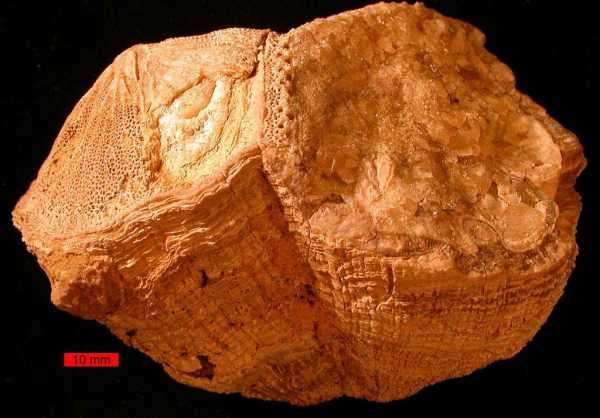
Fossils of rudist bivalves such as this one (Vaccinites) discovered in the United Arab Emirates’ Al-Hajar Mountains, provide valuable insight into the late Cretaceous.
When dinosaurs still left fresh footprints on the mud, our planet twirled around faster than it does today. Chronicled in the rings of an ancient timekeeper is a story of days half an hour shorter and years a week longer than they are today, according to a new study.
That ancient timekeeper is an extinct rudist clam, one of a group of mollusks that once dominated the role that corals fill today in building reefs. The clam belonged to the species Torreites sanchezi and lived 70 million years ago in a shallow tropical seabed, which is now dry land in the mountains of Oman in the Middle East.
, about 5 million years before the story of both the dinosaurs and these clams ended.
The scientists used a laser to pierce microscopic holes in the shell, then examined them for trace elements. These could provide information on the temperature and chemistry of the water in which this mollusk lived.
“We have about four to five data points per day, and this is something that you almost never get in geological history,” study lead author Niels de Winter, an analytical geochemist at Vrije Universiteit Brussel, said in a statement. “We can basically look at a day 70 million years ago.”
The researchers’ analysis of the shell, which is made up of two parts connected by a natural hinge and is known as a “bivalve,” revealed that the ocean temperatures were warmer during that time than previously thought. They reached 104 degrees Fahrenheit (40 degrees Celsius) in the summer and more than 86 F (30 C) in the winter.
They also found that the shell grew much faster during the day than during the night, suggesting that these clams may have had a relationship with another species that fed on sunlight and fueled reef-building, the statement said. This type of one-way or two-way relationship in which organisms help each other is called symbiosis and is also present in some giant clams and algae.
Because this ancient mollusk also showed great seasonal variations, or changes in the shell in different seasons, researchers were able to identify different seasons and count the years. They found that years during that time were 372 days long and days were 23 and a half hours long rather than 24 hours long. It was previously known that days were shorter in the past, but this is the most accurate count found for the late Cretaceous period, according to the statement.
While the number of days in a year has changed, the length of a year has been constant over time, as Earth’s orbit around the sun doesn’t really change. The length of a day has been growing as the moon’s gravity creates friction from ocean tides and slows Earth’s rotation. As the Earth slows, the pull of the tides accelerates the moon, so the moon moves farther away each year. Nowadays, the moon pulls away about 1.5 inches (3.82 centimeters) per year, but that rate changed throughout time.
Looking ahead, the group behind the new study said it hopes to use this new laser method to analyze even older fossils to listen in on even older stories from our planet’s natural timekeepers.
The findings were published Feb. 5 in the journal Paleoceanography and Paleoclimatology.
Sourse: www.livescience.com





